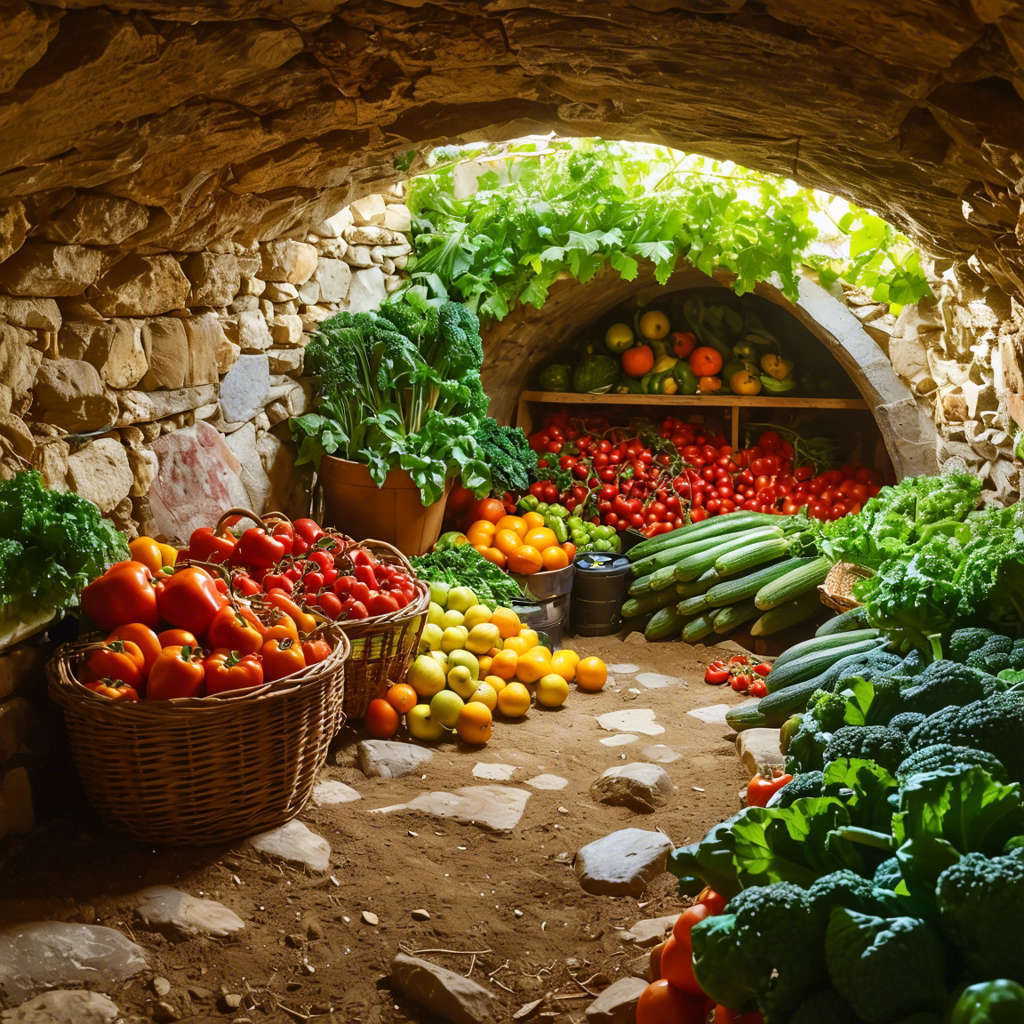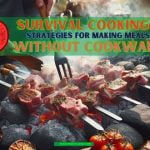Let’s embark on a fascinating journey beyond the conventional kitchen—a world where electricity doesn’t dictate the freshness of your food. Living off the grid isn’t about deprivation but resourcefulness, creativity, and a connection to nature. So, gather around the virtual campfire as we unveil eight ingenious methods to keep your food cool without relying on power outlets or humming refrigerators.
Foods to Store at 40℉ and Below
To maximize food safety, keep perishable refrigerated foods at or below 40°F (4.4°C).
Foods that need to be kept below 40°F (4.4°C) fall into the category of perishable items. Here are some examples:
Dairy Products:
- Milk, yogurt, cheese, and other dairy products should be stored at or below 40°F to prevent spoilage and bacterial growth.
Meat and Poultry:
- Raw meat (beef, pork, chicken, etc.) and poultry should be refrigerated at 40°F or colder.
- Cooked meats, deli meats, and leftovers also fall into this category.
Seafood:
- Fish, shellfish, and other seafood items should be kept cold to maintain freshness and prevent bacterial contamination.
Eggs:
- Eggs should be stored in the refrigerator to maintain their quality and safety.
Cut Fruits and Vegetables:
- Sliced or cut fruits and vegetables are considered perishable and should be refrigerated.
Remember, proper storage temperatures help keep these foods safe and prevent foodborne illnesses.
Foods to Store at Room Temperature
When it comes to storing foods at room temperature without refrigeration, some items remain safe and don’t require chilling. Here are a few examples:
Shelf-Stable Foods:
- These non-perishable products can be safely stored at room temperature:
- Jerky
- Country hams
- Canned and bottled foods
- Rice and pasta
- Flour and sugar
- Spices and oils
- Foods processed in aseptic or retort packages (which don’t need refrigeration until after opening)1.
- These non-perishable products can be safely stored at room temperature:
Other Foods:
- Ghee (clarified butter) can last a long time at room temperature if well sealed.
- Coconut oil, high in saturated fat, can also last for years on a shelf without refrigeration2.
Remember, always follow food safety guidelines, especially for perishable items.
1. Wrap Your Food
How It Works:
- Materials Needed: Plastic wrap, damp newspaper or cloth, covered box or basket, ice packs or chunks of ice.
- Procedure:
- Wrap the items in plastic wrap or place them in plastic bags. This helps prevent moisture from the cloth from directly contacting the food, which can reduce bacterial growth and contamination.
- Dampen the Material: Wrap the plastic-wrapped items in clean, thick cotton cloths or towels. Use multiple layers if needed. The fabric acts as an insulator, keeping the cold in and the heat out.
- Insulate: Put the wrapped food in a covered box or basket.
- Add Ice: Include ice packs or chunks of ice alongside the food.
Why It’s Effective:
- The damp material evaporates, cooling the contents.
- The insulation helps maintain the cool temperature.
- It’s a simple, low-cost way to create a makeshift cooler.
2. Zeer Pot
How It Works:
- Materials Needed: Two clay pots (one larger than the other), wet sand, and food containers.
- Procedure:
Why It’s Effective:
- Water evaporates from the sand, cooling the inner pot.
- The porous clay allows gradual cooling.
- Ideal for root cellars, outdoor kitchens, or emergency situations.
3. Evaporative Refrigerator
How It Works:
- Materials Needed: External chamber (wooden box, insulated space), damp sand or charcoal.
- Procedure:
Why It’s Effective:
- Evaporation cools the air around the food.
- Mimics refrigeration without electricity.
- Great for root cellars, outdoor pantries, or camping setups.
4. Store Food Underground

How It Works:
- Materials Needed: Shovel, existing cool underground space or a purpose-built root cellar.
- Procedure:
- Dig a Root Cellar: Excavate a space below ground level.
- Insulate and Ventilate: Line the walls with insulating materials (straw, hay, or foam). Ensure proper ventilation.
- Store Food: Place your food containers on shelves or racks.
- Monitor Temperature: Regularly check the temperature to maintain freshness.
Why It’s Effective:
- Earth’s stable temperature extends food shelf life.
- Ideal for long-term storage of root vegetables, canned goods, and preserves.
5. Cool Stream Nearby

How It Works:
- Materials Needed: Sealed food containers, nearby streams, or rivers.
- Procedure:
- Choose Secure Containers: Use watertight containers.
- Submerge in Cold Water: Place the containers in the stream or river.
- Anchor Them: Secure the containers to prevent floating away.
- Retrieve as Needed: Access your chilled food when required.
Why It’s Effective:
- Natural stream water maintains a consistently cool temperature.
- Perfect for short-term storage during camping trips or off-grid living.
6. Spring or Well House

How It Works:
- Materials Needed: Small structure (well house or springhouse), access to a natural spring or well.
- Procedure:
Why It’s Effective:
- Natural spring water provides consistent cooling.
- Ideal for dairy products, fruits, and vegetables.
7. Ice Box
How It Works:
- Materials Needed: Insulated box (wooden or foam), ice blocks or frozen water bottles.
- Procedure:
- Build the Box: Construct an insulated box using wood or foam. Ensure it has a tight-fitting lid.
- Insulate the Interior: Line the inside with insulating material (foam, straw, or even old blankets).
- Add Ice: Place ice blocks or frozen water bottles inside the box.
- Store Food: Arrange your perishables within the ice box.
Why It’s Effective:
- The insulation minimizes heat transfer, keeping the cold in.
- Ice blocks maintain a low temperature, preserving your food.
- Portable and versatile—great for picnics, camping trips, or off-grid living.
8. Ice House

How It Works:
- Materials Needed: Insulated structure (wood, straw, or other insulating materials), access to ice (natural or purchased).
- Procedure:
Why It’s Effective:
- Ice lasts surprisingly long when well-insulated.
- Ideal for long-term food storage during hot seasons.
- A reliable solution if you have access to ice.
In our exploration of off-grid food preservation, we’ve journeyed through ingenious methods—each a testament to resourcefulness and sustainability. Whether you’re wrapping food in damp newspaper, harnessing the magic of Zeer pots, or creating your ice house, remember that nature provides solutions beyond the grid.
As you embark on your off-grid adventure, may your food stay cool, your creativity thrive, and your meals be shared under open skies. 🌿🪚🌟 If you have more questions or need further guidance, feel free to ask—I’m here to assist! 😊🍽️.






